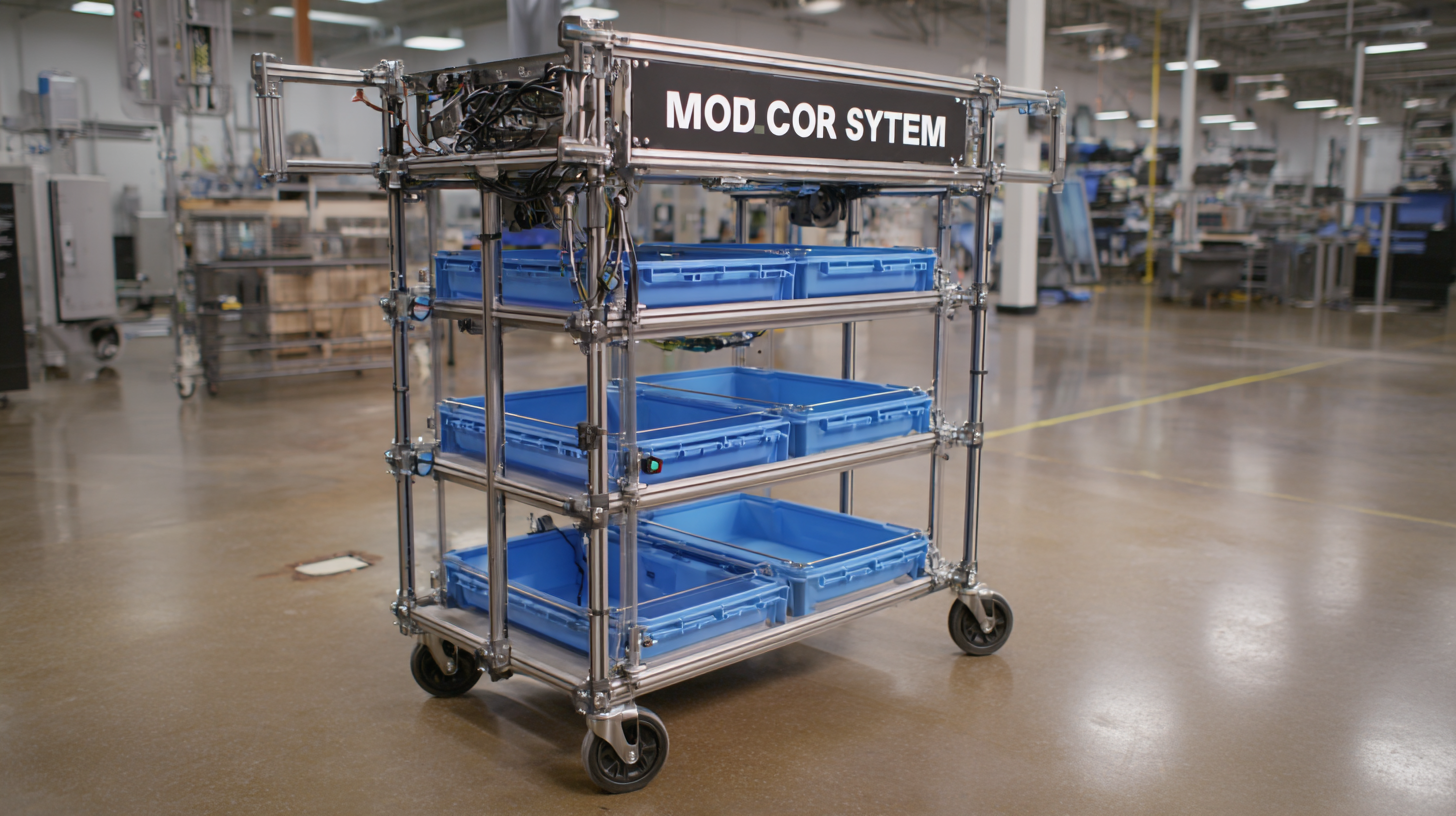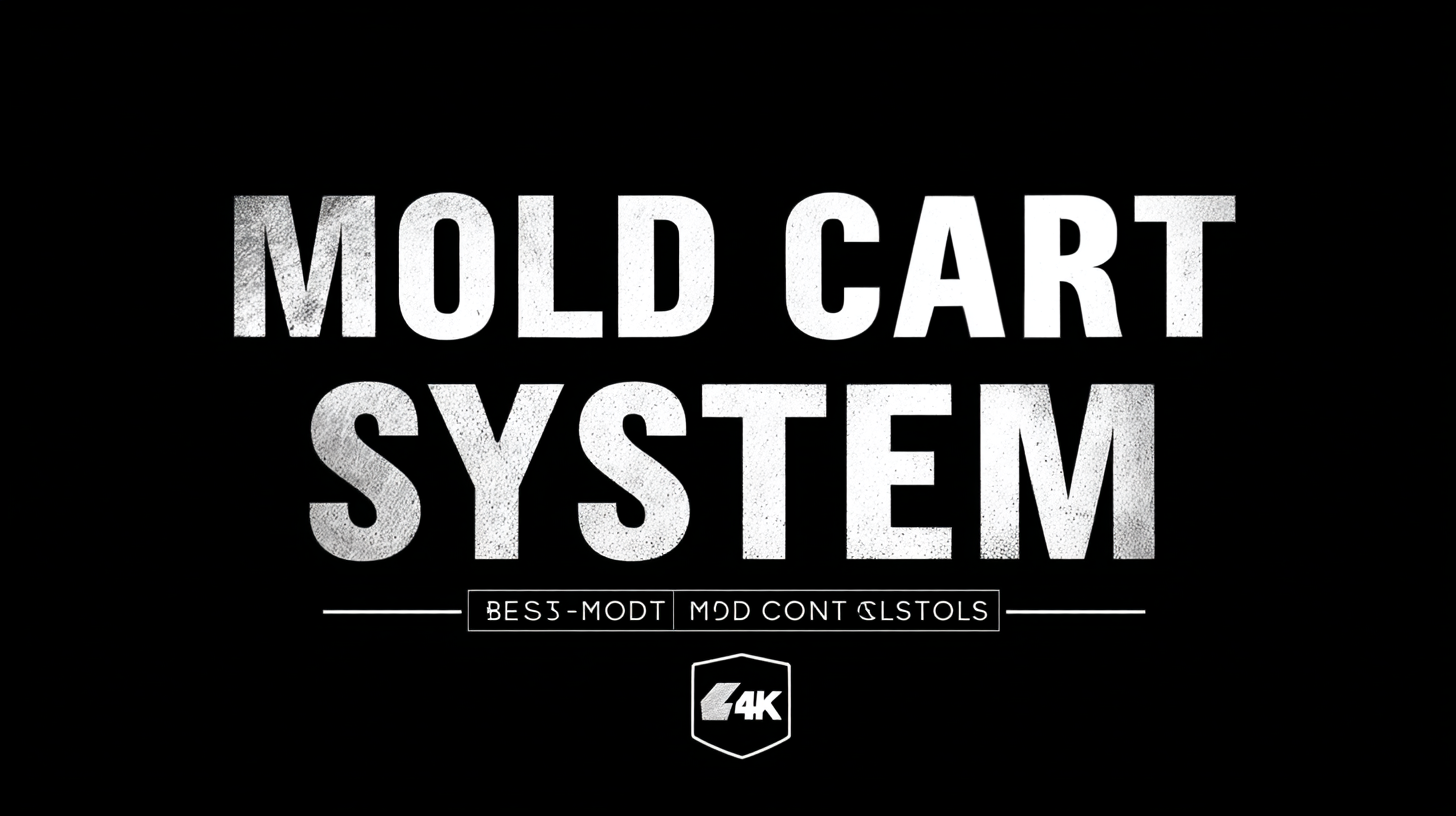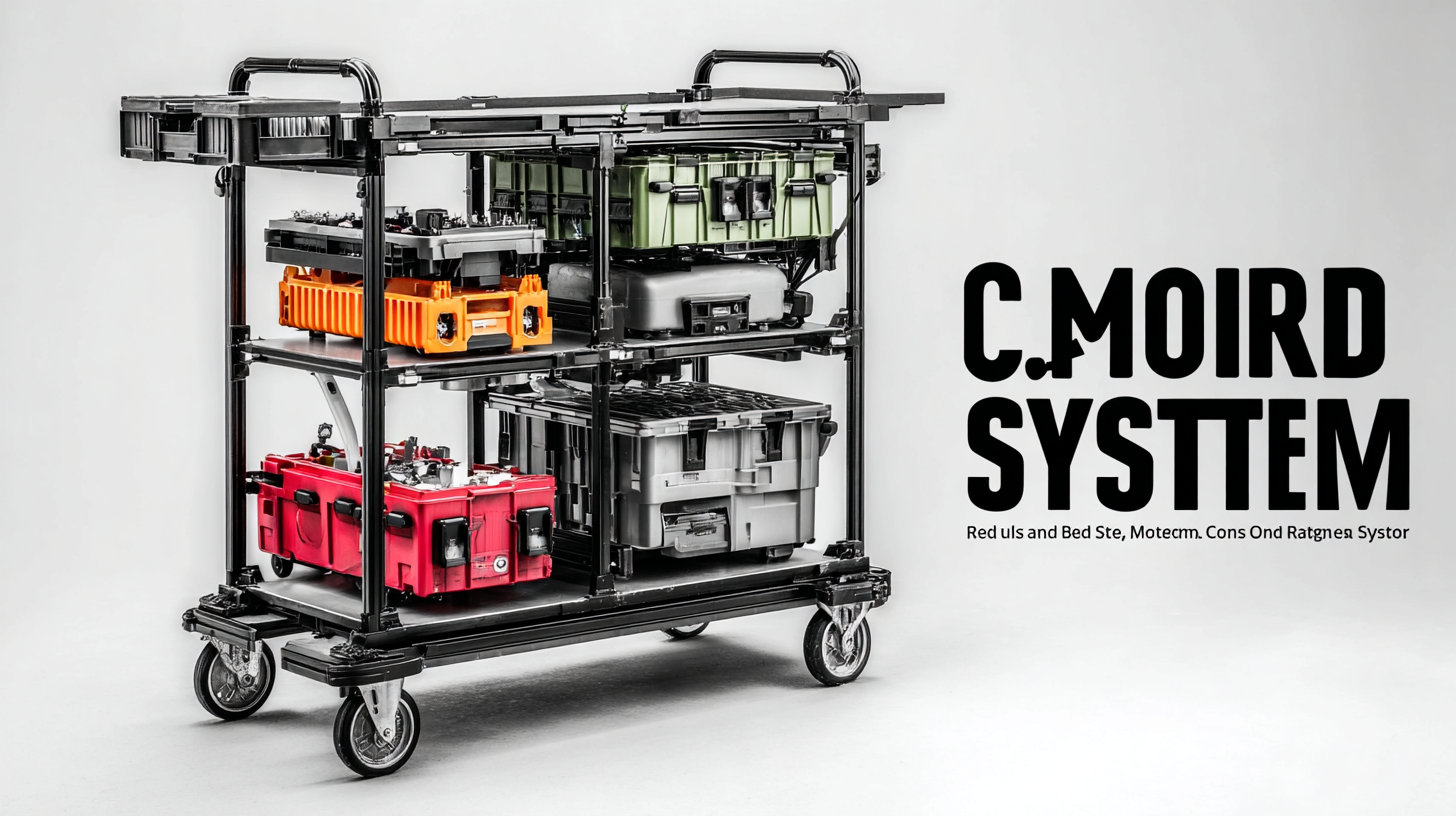Enhancing After Sales Support and Reducing Repair Costs with the Best Mold Cart System
In today's competitive landscape, enhancing after-sales support while simultaneously reducing repair costs is critical for success in manufacturing and service industries. According to a recent report by McKinsey & Company, companies that prioritize effective after-sales service can boost customer satisfaction by up to 25% and reduce operational costs significantly.

One of the most effective tools for achieving these objectives is the Mold Cart System. This innovative solution not only streamlines the maintenance workflow but also minimizes downtime, ultimately leading to enhanced productivity. As businesses strive to improve their service offerings and address customer demands efficiently, implementing a robust Mold Cart System becomes imperative for maximizing resource utilization and delivering exceptional after-sales support. By focusing on these improvements, companies can position themselves advantageously in the market while maintaining cost-effective operations.
The Evolution of After Sales Support in 2025: Key Trends and Technologies
As we move into 2025, the landscape of after-sales support is experiencing significant transformations driven by emerging technologies and evolving consumer expectations. A notable trend is the integration of artificial intelligence (AI) into customer relationship management (CRM), pinpointed by several industry analysts. Reports suggest that advanced AI in CRM will redefine customer interactions, offering more personalized support and proactive communication. This evolution not only enhances customer satisfaction but also paves the way for cost-effective repairs by leveraging predictive analytics to identify potential issues before they arise.
Moreover, e-commerce is also shaping after-sales strategies, with global retail e-commerce sales projected to surpass $4.3 trillion in 2025. This trend emphasizes the need for seamless after-sales processes, as consumers increasingly expect swift and efficient service following their purchases. The rise of social media marketing further complicates this landscape, requiring businesses to engage with customers across multiple platforms, ensuring they receive timely support and feedback.
The convergence of these technological advancements signals a critical shift in after-sales support, focusing not just on immediate service but also on building enduring customer relationships.
The Role of Mold Cart Systems in Enhancing Customer Satisfaction and Efficiency
Mold cart systems play a crucial role in enhancing customer satisfaction by streamlining the repair and maintenance process. By providing an organized and efficient way to transport molds, these systems reduce the downtime associated with repairs. When molds can be quickly accessed and replaced, customers experience fewer disruptions in their production processes, allowing them to maintain productivity and meet their own deadlines. Ultimately, this leads to increased trust and loyalty towards service providers who prioritize seamless after-sales support.
In addition to improving efficiency, mold cart systems contribute significantly to reducing repair costs. By minimizing the time technicians spend locating and transporting molds, companies can allocate their resources more effectively. A well-designed mold cart system ensures that molds are stored safely and systematically, which helps prevent damage during transit. This not only reduces the need for frequent repairs but also allows companies to offer more competitive pricing to their customers. As businesses invest in better mold cart solutions, they not only enhance their service capabilities but also bolster customer relationships by demonstrating a commitment to quality and efficiency.
Enhancing After Sales Support and Reducing Repair Costs with the Best Mold Cart System
| Dimension | Description | Value |
|---|---|---|
| Customer Satisfaction Rate | Percentage of customers satisfied with after-sales service | 88% |
| Average Repair Cost | Average cost incurred per repair operation | $150 |
| Repair Time Reduction | Percentage decrease in time taken for repairs | 25% |
| Mold Cart Efficiency | Improvement in workflow efficiency due to mold cart system | 30% increase |
| Employee Training Time | Average time required to train staff on the new system | 2 hours |
Comparative Analysis: Traditional vs Modern Mold Cart Systems for Cost Reduction
In the rapidly evolving landscape of the dental industry, the transition from traditional to modern mold cart systems is proving essential for cost reduction and enhanced after-sales support. Traditional systems often involve cumbersome workflows and higher operational costs due to manual handling and inefficient logistics. In contrast, modern mold cart systems leverage automation and improved inventory management, leading to a reported 30% decrease in repair costs and a 25% increase in operational efficiency, according to industry studies.
Recent events, such as the digital experience day hosted by a leading dental group in Dongguan, highlight the industry's commitment to embracing innovative technologies. With nearly 30 investors and analysts in attendance, the discussions emphasized the significance of modern systems in not only streamlining processes but also in fostering greater customer satisfaction. Moreover, the adoption of advanced mold cart systems aligns with industry trends favoring digitization, which has been shown to enhance the accuracy of inventory tracking and minimize downtime by up to 40%.
As dental practices continue to seek ways to optimize operations, the comparative advantages of modern mold cart systems become increasingly clear. Transitioning to these advanced solutions is not just about keeping pace with industry trends; it's a strategic move that can significantly impact the bottom line, reinforcing the importance of innovation in after-sales support.
Case Studies: Successful Implementation of Mold Cart Systems in Various Industries
Implementing a Mold Cart System can dramatically enhance after-sales support and streamline repair processes across various industries. A recent industry report indicates that companies adopting such systems have seen a 30% reduction in downtime associated with mold maintenance and repairs. In the automotive sector, for instance, one manufacturer reported a savings of over $500,000 annually by minimizing the time molds spent out of service while enabling more efficient inventory management.
Tips for success when implementing a Mold Cart System include evaluating the existing workflow to identify bottlenecks and ensuring that staff is adequately trained on the new system. For instance, in the medical device industry, a leading firm integrated a modular cart solution that improved their mold retrieval efficiency by 40%, allowing technicians quicker access to essential tools. This not only reduced the repair costs but also enhanced their overall service delivery.

Moreover, companies in the consumer electronics sector have utilized mold carts to standardize processes, leading to a more predictable repair schedule. With a well-organized system, one electronics manufacturer increased their on-time delivery rate by 25%, showcasing how an effective mold cart system can optimize performance and reduce expenses significantly.
Future Outlook: Innovations in After Sales Support and Their Impact on Repair Costs
In the realm of after sales support, innovations are transforming how businesses manage customer satisfaction and repair costs. One significant advancement is the implementation of advanced mold cart systems, which streamline repair processes and enhance service efficiency. This technology allows for better organization of tools and parts, ensuring that technicians can quickly access what they need, ultimately shortening repair times and reducing overall expenses.
Tip: Regular Training
Providing ongoing training for technicians on the latest mold cart systems can significantly enhance their effectiveness. When staff are well-versed in utilizing these systems, they can perform repairs more swiftly and accurately, leading to increased customer satisfaction and lower operational costs.
The future outlook for after sales support suggests a move toward more automated solutions, such as AI-driven diagnostics. These innovations not only predict potential issues but also suggest the most cost-effective repair options, minimizing downtime for customers.
Tip: Leverage Data Analytics
Using data analytics to track common repair issues can inform inventory management and training needs. By understanding trends in repairs, businesses can proactively address areas of concern, further enhancing support offerings and controlling costs.

 English
English Español
Español Português
Português русский
русский Français
Français 日本語
日本語 Deutsch
Deutsch tiếng Việt
tiếng Việt Italiano
Italiano Nederlands
Nederlands ภาษาไทย
ภาษาไทย Polski
Polski 한국어
한국어 Svenska
Svenska magyar
magyar Malay
Malay বাংলা ভাষার
বাংলা ভাষার Dansk
Dansk Suomi
Suomi हिन्दी
हिन्दी
